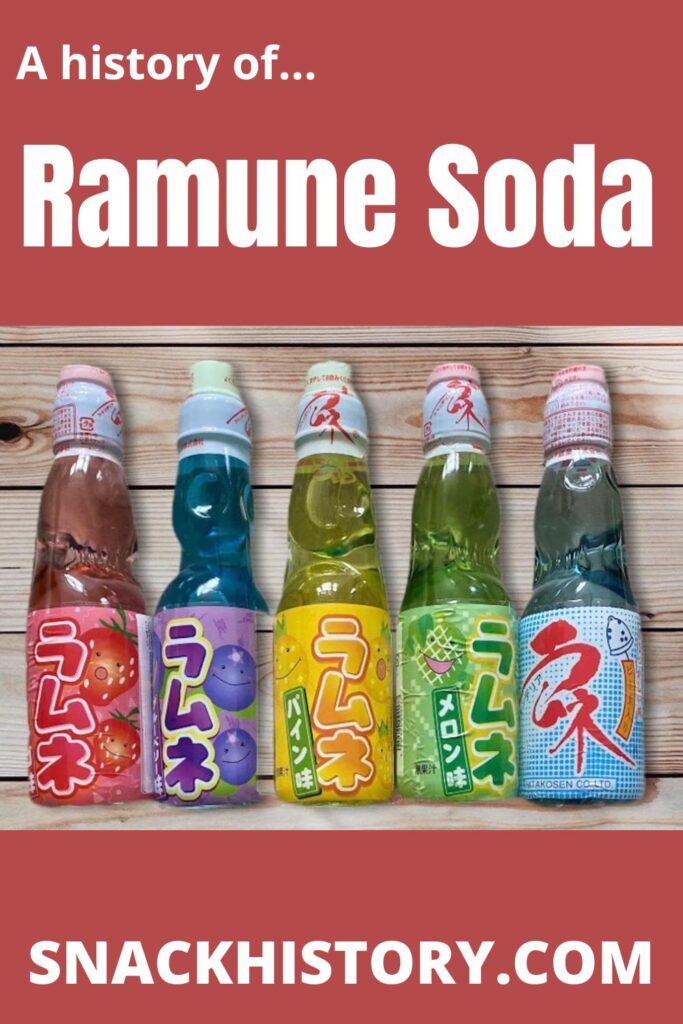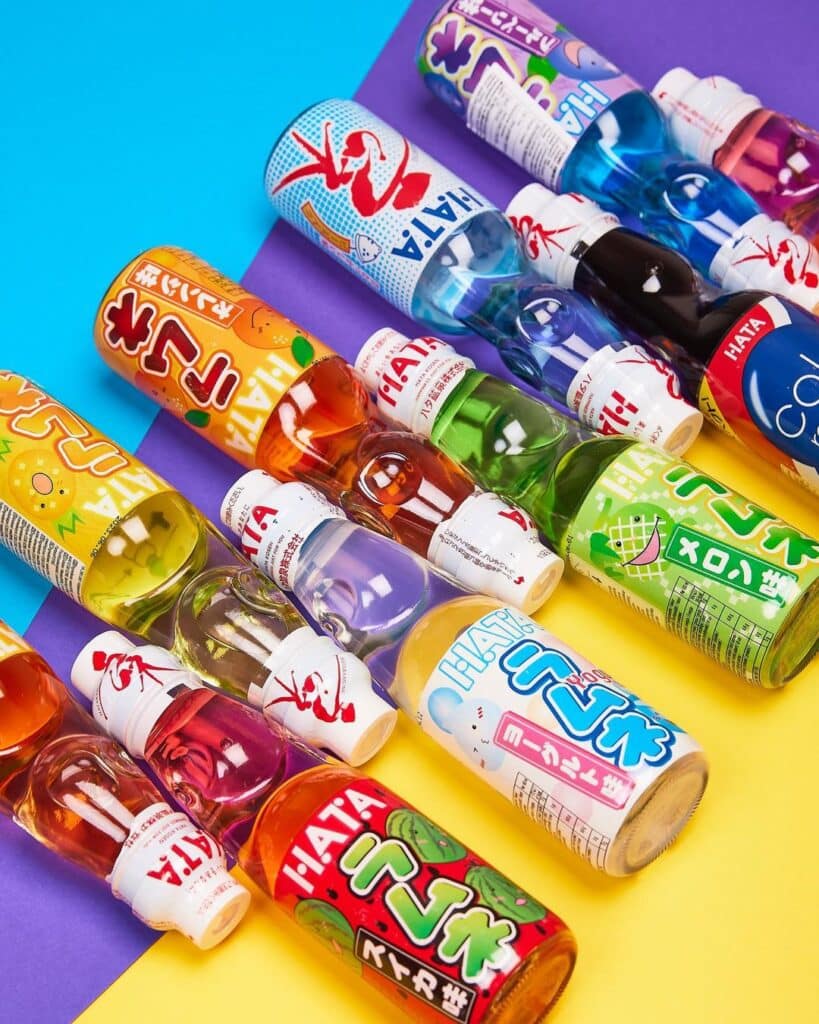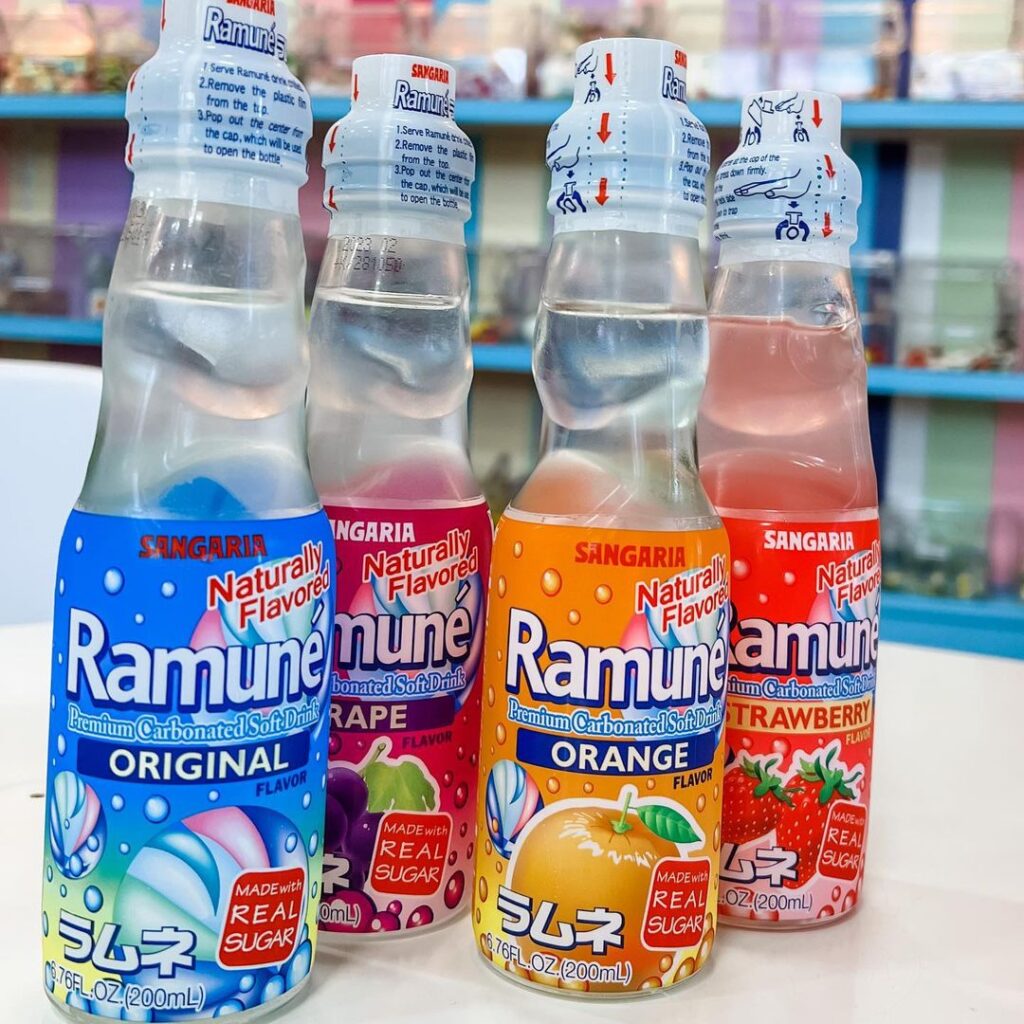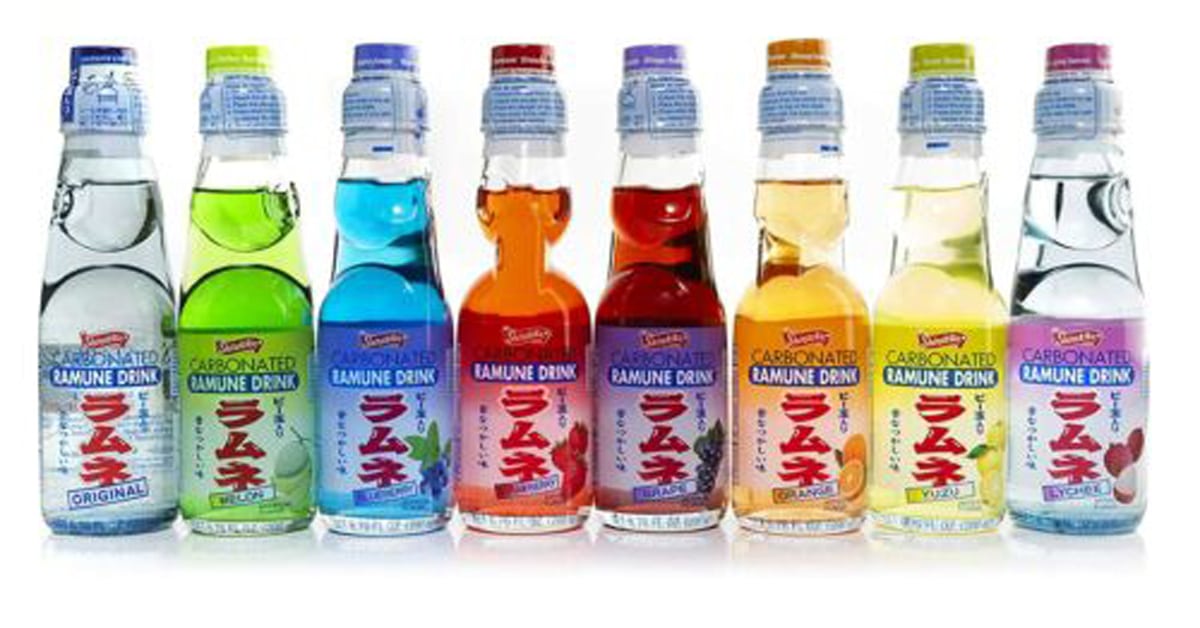Ramune Soda – Japanese Bubbly Soda
It doesn’t matter if you’re from Japan or not, most likely, you’ve already heard about Ramune Soda. But did you know that the drink has a rich history?
Ramune Soda is a Japanese favorite drink for summer festivals, and what’s special about it is its unique bottle and opening process. This is a symbolic drink that delivers a true taste of Japanese culture to the whole world and makes us happy with its diverse flavors.
Please leave a review or any memories of this snack in the comments at the bottom of this page. Thank you!
Let’s look at a popular Japanese drink to see why it’s considered special and what it means to Japanese people and others.

Brief History
What kind of drink is Ramune soda? Although you can also purchase this fizzy beverage in your local grocery shop or get it online, it is not as well-known outside of Japan as Pepsi or Coca-Cola.
The first Japanese Ramune beverages appeared on the market in 1884 in the area sometimes known as the Kobe Foreign Concession and were created by a Scottish chemist, Alexander Cameron Sim. This area was the place where foreigners could work and coexist peacefully with Japanese people, and it also turned out to be a place where one of the most famous drinks was first invented.
When the Codd bottle design became well-known throughout the world in the 1880s, Ramune altered its packaging to the now-recognized bottle. The Ramune bottle is formally known as the Hiram Codd bottle, in honor of the English inventor. After the bottle design was developed, the bottle started to go out of style, but Ramune persisted with the design, making adjustments as necessary without deviating significantly from the original concept.
The main idea of the bottle design was that the inclusion of the ridges was intended to prevent the marble from obstructing the flow of the drink, which was added in 2006. This feature is the only significant variation between the original Codd bottles and the ones in which you may purchase Ramune today.
What Makes Ramune Soda Special?
What makes Ramune Soda special isn’t exactly the flavor. The drink’s taste and flavors are not very distinctive, but you can’t say the same about the packaging. It comes in a small, blue glass bottle with a twist in the middle and a plastic top, which is cool compared to other classic soda bottle designs.
The Ramune bottle is well-known among Japanese consumers because of the jingling sound the glass marble makes when it rolls around the empty container. But for a lot of individuals, the novelty of the glass container only makes drinking this well-known beverage more pleasurable.
The drink is an excellent caffeine-free alternative to many sodas. The prominent feature of the bottle is the stone at the lip, which is kept there until the bottle is opened by the pressure of the carbonation kept inside.
How Do I Open a Bottle of Ramune?
To open the Ramune Soda bottle, start by ripping the seal open and taking out the included opening tool. The bottle opener must then be inserted into the bottle while facing the marble. The opener should then be gently pushed against the marble until it finally pops into the soda. That’s it! It’s time to take a sip of your favorite soda!
To prevent the marble from falling to the bottom of the entire bottle, the bottom of the neck is thinner than the marble. Additionally, as mentioned before, the two ridges on one side prevent the marble from getting in the way of your drink when you’re taking a sip.
The sound of the marble clattering in the Codd Stopper bottle as you drink it is an echo of the sound heard by thousands of kids in the past and present as the sweet, sharp bubbles low out of the bottle’s neck, making them giggle.
Codd-Neck Pop Bottle Characteristics
The glass used to make coddle-neck bottles is thick, which helps it withstand the internal pressure of its carbonated contents. These bottles contain a unique chamber in the neck that stores a small marble, which distinguishes them from ordinary glass soda bottles. Instead of a conventional twist-off cap, this marble serves as the seal for the bottle’s carbonation. Because of this distinctive mechanism, Ramune is sometimes called “mabu soda” or “marble soda” outside of Japanese culture.
The bottles are filled upside down during production, causing the inside pressure to drive the marble against a rubber washer and create an airtight seal. A plastic tool is used to advance the marble within the bottle’s neck so it can roll around and jingle while you drink from one of these clever-looking bottles.
Although all beverage producers originally used these bottles, Banta, a well-known Indian pop beverage, is the only soft drink that does so today.
Flavors of Ramune Soda
Since the debut of the original Ramune Soda, a variety of other flavors have been offered, ranging from the predictable but delectable fruit flavors, such as watermelon, to the absurdly strange ones, including curry, corn soup, or kimchi.
The flavor of Japanese Ramune soda originally came from the lychee fruit. Today, however, producers of Ramune offer more than 50 unique flavors, including lemon-lime, blueberry, melon, orange, peach, pineapple, strawberry, grape, and so on.
Ramune has also been included in various goods, usually sweets, candies, or ice cream, with the most well-known variety being the tiny, firm, white Ramune candies from Tofu Cute that are packaged in a Codd Stopper bottle-like container made of plastic. These are available in most supermarkets and convenience stores, and they crumble in your mouth with a little pressure. It’s difficult to resist gulping the entire bottle down at once.
Ramune doesn’t stop there, either; the list also includes Ramune Kit Kats, beers, cocktails, and mixers.
How Does Ramune Soda Taste Like?
If you’re going to find Ramune soda in your local store, then you should know what you’re about to taste. It’s pretty sweet, and the “original” taste has a faint citrus flavor that reminds some people of bubble gum. As mentioned before, modern Ramune soda flavors are diverse and available in a very wide spectrum of flavors, so you should choose one that best fits your taste, or try a few different flavors and choose your favorite.
The drink does its job, it’s nostalgic and funny, has unique properties, and most importantly, on a steamy summer night, the energizing aroma of Ramune soda cools your body and brings your childhood memories back to life.
Does Ramune Contain alcohol?
If you don’t drink alcohol but want to taste Ramune soda, don’t worry! Why? Because Ramune is not an alcoholic beverage. However, it doesn’t mean that you can’t try it with other alcoholic beverages. Ramune’s wide variety of flavors, like those of many other carbonated non-alcoholic drinks, make it perfect for blending alcoholic cocktails. Alcohols like whiskey, rum, vodka, or gin can be used with Ramune soda to add just the right amount of flavor.
It’s not alcoholic, but it’s not healthier either. Compared to other soft drinks like Pepsi or Coca-Cola, Ramune is not healthier. After all, it is a carbonated beverage with about 17 grams of sugar and 19 grams of carbs.
Unlike a conventional Coca-Cola can, which has 139 calories, a Ramune bottle has only 88 calories. So, even the drinking amount of Ramune soda should be controlled.
Are Ramune’s Codd-neck Bottles Recyclable?
One more positive thing about the Ramune Soda bottle is that it can be recycled and reused for different creative purposes! Usually, Ramune soda is sold in recyclable bottles, which are typically collected at the shops or stands where it is sold. Ramune bottles can occasionally be used as vases for flowers, decorations, or candle lanterns due to their distinctive appearance.
Where Can I Buy Ramune Soda?
If you want to taste Ramune soda, you’ll need to know where to find it. You should be able to buy one at your local grocery stores or locate a stand selling Ramune while at the festival. If you’ll be able to find one near your living area, don’t give up on it. Different online shops, like Amazon, offer many flavors of Ramune soda, so just open up your laptop and start looking for the flavor you desire the most.
Prices will differ across brands and between different retailers, and shipping might also take some time. However, drinking the beverage with such a long and interesting history and unique drinking experience is still worth it!
Additionally, the drink is safe for children! a Codd-neck bottle prevents the stone from escaping, making it completely safe, especially for our little friends. But it can be challenging to open a bottle of Japanese Ramune.
Ingredients
- Water
- Glucose-Fructose Syrup
- Acidity Regulator (Citric Acid)
- Flavourings
- Colour (E102)
Nutrition
| Serving Size: | 100 fl oz | % Daily Value* |
| Amount Per Serving | ||
| Calories | 1060.6 | |
| Calories from Fat | 0 | |
| Total Fat | 0g | 0% |
| Saturated Fat | 0g | 0% |
| Trans Fat | 0g | |
| Cholesterol | 0mg | 0% |
| Sodium | 0mg | 0% |
| Total Carbohydrates | 287.9g | 96% |
| Dietary Fiber | 0g | 0% |
| Sugars | 287.9g | |
| Protein | 0g | |
| Vitamin A | 0% | |
| Vitamin C | 0% | |
| Calcium | 0% | |
| Iron | 0% |
- Percent Daily Values are based on a 2000-calorie diet.
Pictures


Commercials
Final Words
Ramune soda isn’t just a marble-colored bubbly drink. It is part of the culture of Japanese people and a sweet memory of their childhood. That’s why Japanese people enjoy drinking soda at almost every special festival.
Maybe you don’t consume a lot of soda these days, but Ramune soda will likely make you happy and will give you a different soda experience. If you like Ramune soda, you must try Japanese snacks as well!
Would you like to taste Ramune soda and experience its uniqueness? Let us know in the comments.

Nato is a content writer and researcher with a background in psychology. She’s passionate about writing about the candy industry and exploring the cultural significance of sweets and treats. She believes that the stories behind our favorite snacks can reveal a great deal about our values.
Please leave a review or any memories of this snack in the comments below. Thank you!
Click here for a full A-Z list of Snacks and Candy
